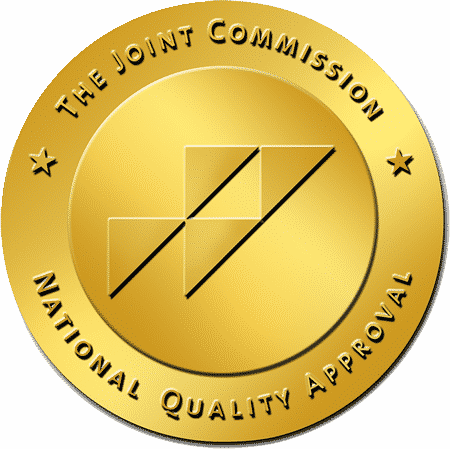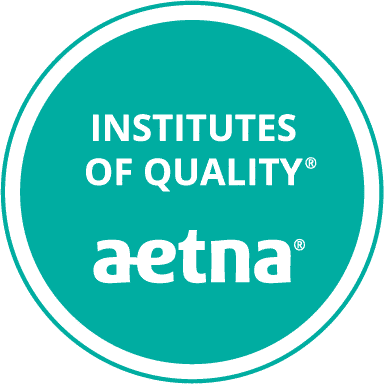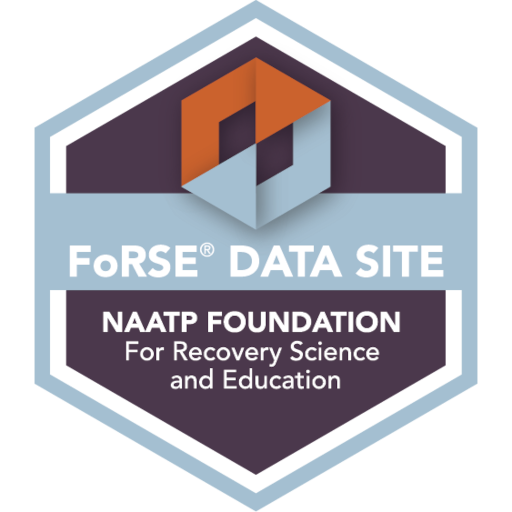La Hacienda Treatment Center has seen an increase in fentanyl addiction. People seeking help get tricked and moved through various treatment referral routing service websites. We are an established addiction treatment facility with a medical unit and doctors that are available 7 days a week. Opioid drugs are rampant throughout the country. Fentanyl is one of the prescription opioids monitored, however, we are seeing fentanyl in illicit drugs.
Drugs laced with fentanyl can be extremely dangerous. Often people are unaware that their drugs are laced with fentanyl. In its liquid form, Illicitly Manufactured Fentanyl (IMF) can be found in nasal sprays and eye drops.
Overdose deaths involving opioids rose 38.1 percent. Overdose deaths involving synthetic opioids (primarily Illicitly Manufactured Fentanyl) rose 55.6 percent and appear to be the primary driver of the increase in total drug overdose deaths. – United States Drug Enforcement Agency
If you’re searching for help and information on fentanyl, you’re likely concerned about how they cause drug abuse, the opioid overdose dangers, and where and how to get help.
Quick Overview
- Fentanyl is a highly potent synthetic opioid that, while beneficial for pain relief, poses significant risks of addiction and overdose, particularly when encountered in illicit drugs or misused in prescription settings.
- Overdose deaths involving synthetic opioids like fentanyl have surged dramatically, with initiatives such as the use of fentanyl test strips and naloxone distribution being important tools in reducing the harm and prevalence of accidental overdoses.
- Efforts to combat fentanyl addiction include comprehensive treatment programs and aftercare support, as well as legal and law enforcement actions aimed at disrupting fentanyl trafficking and educating the public on substance use disorders as well as the dangers of fentanyl misuse.

Fentanyl: What You Need to Know
Fentanyl is a synthetic opioid analgesic that has been a critical player in the arena of pain management since its creation in 1959. With a potency that dwarfs that of heroin by 50 times and morphine by 100 times, fentanyl’s capacity to bind to the body’s opioid receptors and flood the system with dopamine is unrivaled by other drugs. Yet, this remarkable efficacy in alleviating severe pain comes with a double-edged sword.
The euphoria that fentanyl sparks is often the prelude to the path of addiction and overdose, a risk magnified when fentanyl analogues enter the picture through illicit channels.
Illicit Fentanyl
The opioid crisis are deepened by the proliferation of illicit fentanyl and counterfeit pills. Created to mimic legitimate pharmaceuticals like oxycodone, these counterfeit pills and tablets are full of risk, with users often oblivious to the lethal potency they contain. Drug dealers, driven by profit rather than pharmacology, have fueled a surge in overdose deaths, as unsuspecting individuals chase heroin-like effects only to confront fentanyl’s unforgiving potency.
Caught in the crosshairs are not only those seeking illicit drugs but entire community-based organizations attempting to warn their community. National Institute on drug experts warns of fentanyl’s presence in the drug supply. Fentanyl facts bear witness to the devastation: sold illegally, these pills are not merely another addition to the opioid drugs menu; they are a ticking time bomb in the hands of the unaware.
Prescription Fentanyl
On the other side of the coin, prescription fentanyl pills serve as a huge relief to those grappling with severe pain, such as cancer patients. Yet, these opioid analgesics, including other prescription opioids, despite their medical legitimacy, are unfortunately adding to addiction via diagnoses such as opioid use disorders or substance use disorders. The risk of abuse and the pursuit of fentanyl’s effects can unsuspectedly put individuals in danger long after their prescriptions have run their course, leading down the path toward dependency.
Taking fentanyl in higher doses or in ways not prescribed increases the risk of addiction and overdose from fentanyl.

The Growing Threat of Fentanyl-Related Overdose Deaths
Fentanyl is a synthetic opioid with over 106,000 drug overdose deaths rocking the United States in 2021, a notable fraction of which involved synthetic opioids like fentanyl. This staggering figure is not an outlier but part of a trend, where overdose deaths involving synthetic opioids have increased nearly 7.5-fold from 2015 to 2021, exhibiting an escalating epidemic. The leap is particularly pronounced from 2019 to 2020, with a surge of over 56% in such overdoses, underscoring the urgency of addressing this public health emergency.
Nowhere is the fentanyl crisis more palpable than in Texas, where the impact of Fentanyl has been severe. The state witnessed a more than 60 percent increase in overdose deaths as of 2021, with synthetic opioids accounting for a harrowing 2,506 overdose deaths.
The vulnerability of the youth is starkly highlighted, as 92 percent of opioid overdose deaths among those aged 0 to 17 involved synthetic opioids such as fentanyl.
Identifying Fentanyl-Laced Drugs
The challenge of identifying fentanyl-laced drugs is like finding a needle in a haystack, with the naked eye often falling short to discern fentanyl’s potency and/or presence. The solution lies in fentanyl test strips, a simple yet revolutionary tool to detect fentanyl in various substances, be they powders, pills, or injectables. With a straightforward process of sample and water mixing, these strips provide a lifeline, potentially averting accidental overdoses.
In the hands of the public, fentanyl test strips are not just a piece of plastic but a powerful weapon in the battle against overdose deaths. Their accessibility and ease of use offer a glimmer of hope in the face of a drug that is commonly mixed with other illicit substances like cocaine and heroin, contributing significantly to the overdose epidemic.
However, the drug dealers and users of fentanyl do not carry test strips to see if their drug of choice or other prescription opioids have been mixed in what they are ingesting.

Recognizing Fentanyl Addiction and Its Symptoms
Fentanyl is dangerous with its high potency seducing users into addiction sometimes after a single encounter.
Withdrawal from fentanyl is marked by severe symptoms that underscore the drug’s potent impact on the brain’s chemistry.
Physical Symptoms
Fentanyl, similar to morphine which is an opioid analgesic, has effects described below.
This powerful opioid often prescribed for severe pain can cause addiction and fatal overdoses.
The physical symptoms of fentanyl addiction include:
- Euphoria
- Drowsiness
- Nausea
- Confusion
- Constipation
- Sedation
- Compromised breathing
- Risk of respiratory depression
- Risk of hypoxia, brain damage, or death
These symptoms are a reminder of the fine line between pain relief and someone with a fentanyl addiction.
Behavioral Changes
Behavioral signs of fentanyl addiction include:
- Loss of interest in once-loved activities
- Retreat into isolation
- Financial turmoil
- Unpredictable mood swings
- Relentless pursuit of fentanyl, often at the expense of work, education, and home life
- Compulsive drug-seeking behaviors
Treatment Options for Fentanyl Addiction at La Hacienda
Confronting fentanyl addiction is a journey that demands a comprehensive roadmap and treatment options. From the initial detox to residential and aftercare support, the path to recovery is multifaceted, requiring a blend of evidence-based therapies and compassionate care.
Organizations like the Substance Abuse and Mental Health Services Administration (SAMHSA) stand ready with a National Helpline, offering support and referrals to local facilities that can guide individuals through the maze of substance use disorders, including substance use disorder caused by fentanyl.
At the heart of this healing process is La Hacienda Treatment Center, which has been helping addicts and alcoholics find recovery since 1972, with expertise in treating opioid withdrawal symptoms and substance use disorders. Offering a holistic approach that addresses the physical, psychological, and spiritual aspects of addiction, La Hacienda offers a safe place on a tucked-away ranch in the Hill Country of Texas.

Programs Offered:
- Medical and Detoxification
- Adult Chemical Dependency Program
- Recovering Professionals Program
- Alumni
- Aftercare
Detox and Withdrawal Management
The first step on the road to recovery is to determine if detoxification is needed. Detox and withdrawal management from fentanyl demands close medical supervision to navigate the withdrawal symptoms.
Some common withdrawal symptoms include:
- Muscle and bone pain
- Sleep disturbances
- Gastrointestinal distress
- Uncontrollable leg movements
Detox is merely part of the process of early recovery. La Hacienda’s Special Care Unit offers a sanctuary where medical detoxification can occur under the vigilant care of physicians, therapists, and nurses, setting the stage for a recovery journey built on a foundation of safety and support.
Inpatient and Outpatient Rehab Programs
Treatment facilities for fentanyl addiction can include both inpatient and outpatient. Inpatient rehab programs remove someone from the triggers and turbulence of drug abuse in their daily environment to focus solely on recovery. Conversely, outpatient rehab programs, such as Intensive Outpatient Programs (IOP), offer a bridge between the protective world of treatment and the challenges of everyday life, allowing participants to reinforce their sobriety while engaging with their usual responsibilities.
La Hacienda Treatment Center, nestled in the serene Texas Hill Country, embodies the principle that recovery is not a one-size-fits-all proposition. With IOPs that emphasize relapse prevention and the cultivation of a robust support network, La Hacienda equips individuals with additional resources and the coping mechanisms necessary to navigate the complexities of a life lived in sobriety, all while offering the in-depth care and structured support of their residential program.
Aftercare and Ongoing Support
The journey of recovery from fentanyl addiction does not conclude at the exit doors of a rehab facility. Aftercare and ongoing support are the compass and map that guide the individual through the uncharted territories of post-treatment life. Programs like sober living residences and SAMHSA’s National Helpline extend a lifeline of structure and support, ensuring that the path to sustained recovery is never walked alone.
The essence of aftercare is continuity—a seamless transition from the intensive care of rehab to the empowered autonomy of everyday life. It’s about nurturing the seeds of sobriety planted in treatment until they take root in the soil of a new life. La Hacienda understands this well, offering not just a program but a community, where the bonds forged in the treatment environment endure long after the initial treatment phase has passed.

Preventing Fentanyl Overdose: Naloxone and Harm Reduction Strategies
Dr. Boone the Medical Director at La Hacienda is passionate about teaching every person how to prevent an overdose. Naloxone has emerged as a pivotal player in the opioid crisis, a medication with the singular ability to snatch lives back from the brink of overdose. Its role in reversing the life-threatening depression of the central nervous system and respiratory system offers individuals a chance to breathe anew.
The U.S. Surgeon General has underscored the significance of naloxone, advocating for its widespread adoption among those at elevated risk of opioid overdose and their immediate circles. Education on how to administer naloxone is not just a medical recommendation—it’s a societal imperative to help those who cant help themselves of fentanyl-related harm.
Administering Naloxone
Administering naloxone is a skill that can mean the difference between life and death. Available without a prescription in most states, naloxone can be administered by non-medical individuals, transforming bystanders into first responders in the critical moments of an overdose emergency. Coupled with the guidance provided by the American Medical Association, which offers resources like animated videos demonstrating the use of nasal sprays and auto-injectors, naloxone is a powerful ally in the fight against opioid overdoses.
The act of administering naloxone is:
- A profound assertion of humanity’s capacity for care
- A bridge over the chasm of despair that opioid overdoses can create
- A call to action that echoes across communities, urging individuals to arm themselves with knowledge and readiness to act
- A stand as guardians against the specter of respiratory depression and the shadow of loss.
Harm Reduction Measures
In the face of the fentanyl epidemic, harm reduction measures are not just strategies—they are lifelines cast into turbulent waters. The federal government and organizations like the Centers for Disease Control and Prevention (CDC) and SAMHSA are propelling these measures forward, striving to weave them into the fabric of general medical care and increase their accessibility. These initiatives include everything from syringe services programs, which are monitored and evaluated on a national level, to the distribution of fentanyl test strips in Texas, part of a larger effort to reduce the toll of opioid overdoses.
The heart of harm reduction is humanity. It acknowledges the complex nature of addiction and seeks to minimize the harmful consequences without judgment. As part of these efforts, Narcan, the brand name for naloxone before emergency assistance arrives is becoming more widely available.
This critical medication can reverse the effects of an opioid overdose, effectively saving lives. By embracing harm reduction, we acknowledge the reality of drug use and choose to prioritize mental health, and safety over stigma and silence.

Legal and Law Enforcement Efforts Against Fentanyl Trafficking
While treatment and harm reduction are vital, so too are the legal and law enforcement efforts to stop fentanyl trafficking. The Drug Enforcement Administration (DEA) has identified fentanyl as a significant threat and is actively engaged in operations to seize this dangerous drug and prevent its distribution within the United States. The scale of these operations is reflected in the dramatic increase in fentanyl seizures, a clear indication of the ongoing battle against this potent substance.
Legislation serves as another front in this war against fentanyl. The SUPPORT for Patients and Communities Act is a critical piece of federal legislation aimed at addressing the opioid crisis, with specific measures targeting fentanyl and its analogues. Meanwhile, states have enacted laws that range from imposing harsher penalties on traffickers to enacting Good Samaritan laws to encourage the saving of lives during overdoses. These legal efforts are complemented by collaborative international operations to dismantle fentanyl trafficking networks, emphasizing the global nature of this challenge.

Fentanyl Facts in Texas
In Texas, the fentanyl situation is both a public health emergency and a clarion call for action. The rise in fentanyl use and the corresponding spike in overdoses have galvanized health professionals and community leaders alike. Synthetic opioids like fentanyl are the culprits behind an overwhelming number of overdose deaths, with their strength far exceeding that of other opioids. Fentanyl, in its illicit form, is often added to:
- Heroin
- Cocaine
- Methamphetamine
- Counterfeit pills
This exacerbates the risk and toll on those using fentanyl and other illicit drugs.
The Drug Enforcement Administration emphasizes the gravity of the situation, highlighting how criminal drug networks mass-produce fake pills, disguising them as legitimate prescription opioids, thus endangering unsuspecting individuals across Texas. As part of the state’s response, Governor Abbott has supported initiatives like the Texas fights fentanyl campaign, underscoring the importance of informing the public about the risks and providing resources like naloxone to save lives.
Summary
This article presents key facts on the risks, overdose prevention, treatment, and the urgent problem of this synthetic opioid and illicitly manufactured fentanyl trafficking.
One thing is clear: this potent opioid is a multifaceted challenge requiring a multifaceted response. From understanding its risks and recognizing the signs of addiction to engaging in effective treatment and prevention strategies, the battle against fentanyl is ongoing. Organizations like La Hacienda Treatment Center play a pivotal role in this fight, offering hope and healing to those affected.
If you or a loved one is fighting fentanyl’s impact, take informed action, whether it’s seeking help for addiction, supporting loved ones on their path to recovery, or advocating for policies that protect communities. The fight against fentanyl is not one fought in isolation, but together, through education, compassion, and perseverance, we can turn the tide against this crisis.
Frequently Asked Questions
Fentanyl is a synthetic opioid that is highly potent and increases the risk of overdose and addiction, making it exceptionally dangerous, particularly when used illicitly.
To detect fentanyl in drugs, use fentanyl test strips as they provide a crucial tool for harm reduction and can help determine the presence of this dangerous substance.
If you experience severe muscle and bone pain, sleep disturbances, gastrointestinal issues, and strong cravings, among others, it could be a sign of fentanyl withdrawal. Seek medical supervision during detox to manage these symptoms safely.
Yes, naloxone can rapidly reverse the effects of a fentanyl overdose by restoring normal breathing in individuals whose breathing has been severely compromised due to opioid use. It is crucial to seek immediate medical help in case of a suspected overdose.
Law enforcement agencies such as the DEA are seizing fentanyl and targeting trafficking networks, while legislation like the FEND Off Fentanyl Act imposes sanctions on those involved in global trafficking. These actions reflect efforts at both state and federal levels to combat fentanyl trafficking.
Hypoxia is a condition that occurs when there’s insufficient oxygen in the tissues to maintain bodily functions. During a fentanyl overdose, hypoxia can occur because the drug, which is a potent synthetic opioid, depresses the central nervous system. This includes the brain’s ability to regulate breathing.
Sources:
https://www.dea.gov/resources/facts-about-fentanyl
https://en.wikipedia.org/wiki/Opioid_epidemic_in_the_United_States




